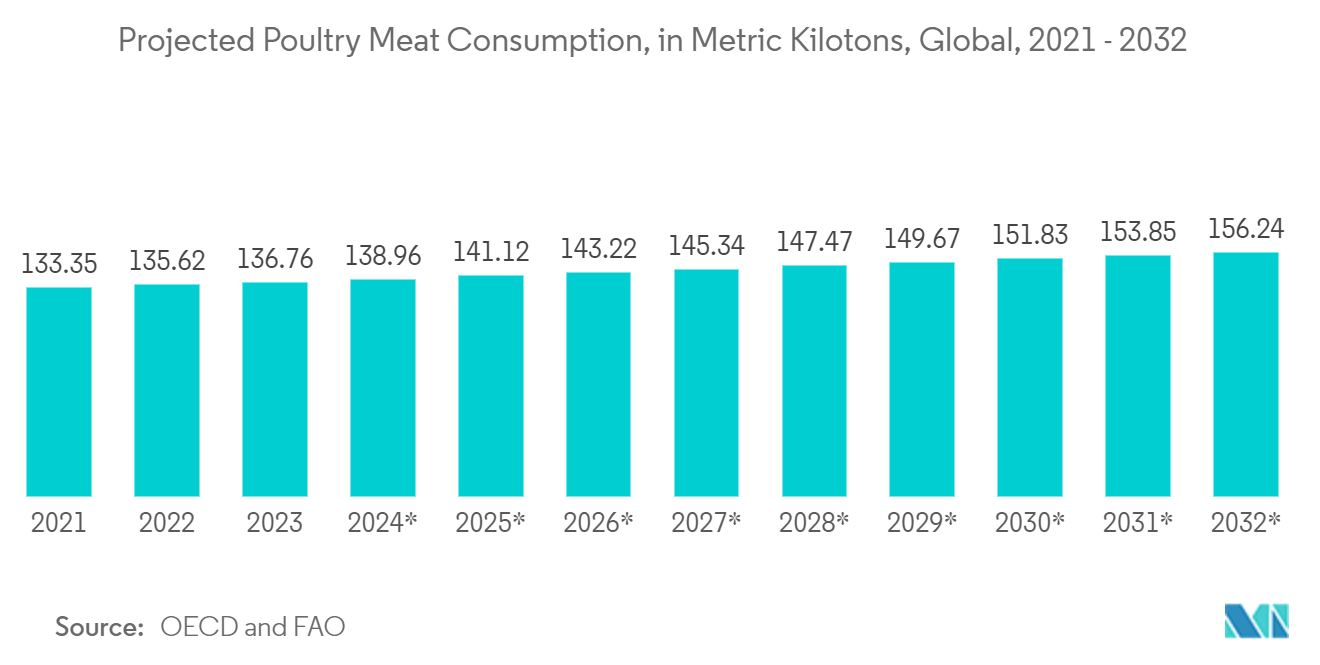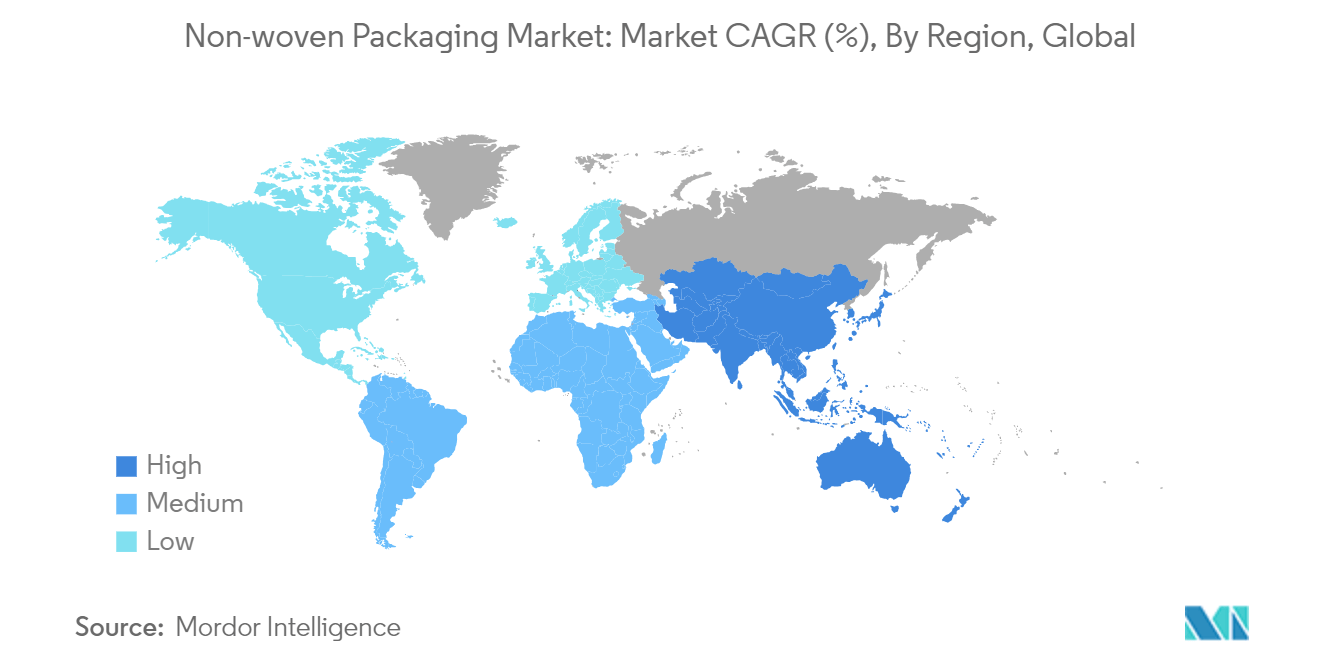Market Trends of Non-woven Packaging Industry
Food Packaging to Hold Major Market Share
- Producers and converters in the food packaging sector are actively innovating to create sustainable solutions, often incorporating natural fibers and optimizing raw material usage. In food pads, air-laid non-wovens take center stage, boasting a high proportion of natural fibers.
- Additionally, spun bond/SAP/spun bond laminates are gaining traction in the market. These non-woven food pads effectively absorb liquids from perishable goods like meat and fruit, preserving freshness and extending shelf life, ultimately reducing food wastage. According to the OECD, the projected global consumption of poultry meat will amount to 156.24 metric kilotons by 2032.
- According to INDA, the association representing the non-woven fabrics industry, air-laid is particularly well-suited for food pads due to its resemblance to hygiene absorbent cores. It exhibits rapid liquid acquisition, minimal rewetting, and high absorbency capacities. However, other types of non-woven fabrics, including spun bond, melt blown, and needle-punched varieties, also serve distinct roles in the food packaging industry.
- One of the key advantages of non-woven materials in food packaging is their cost-effectiveness compared to traditional packaging materials such as plastics and paper. This affordability makes them an appealing choice for various food packaging applications, from fresh produce to processed foods.
- Non-woven materials are crucial in crafting insulated bags and totes designed for transporting perishable food items like groceries, prepared meals, and frozen foods. These bags are equipped with thermal insulation to maintain the desired temperature, ensuring the freshness and quality of the contents during transit. Additionally, non-woven fabrics are extensively utilized to create reusable shopping bags tailored for groceries, produce, and food items. These bags are prized for their durability, strength, and versatility, serving as an eco-friendly substitute for disposable plastic bags.

Asia Pacific Expected to Witness Significant Growth
- The countries across the region have focused on supporting all aspects of the textile industry. In particular, attention was given to the numerous uses of non-wovens in different packaging applications. Non-woven bags are widely acceptable in the region due to their durability and tear-resistant, flexible features for advertisements, shipping, packing, and promotion.
- As non-wovens and technical textiles are considered the most promising and dynamic segment of the textiles industry, the demand and consumption of Non-wovens and Technical Textiles will grow steadily throughout the forecasted period in India. Indian industry is beginning to follow international trends by calling on foreign players to collaborate with the entrepreneurs in India and pushing manufacturers to innovate non-woven packaging and increase the production line.
- Packaging is one of the most traditional non-woven applications in China. Due to the ban on plastic bags, there is a considerable demand for non-woven reusable shopping bags. The Chinese non-woven industry will continue to focus more on industrial packaging, medical packaging, and food packaging applications in the future.
- In China, the demand for non-wovens in the medical and surgical industry will change occasionally. The Healthy China Initiative and the development of products and applications will continue to boost non-woven medical and surgical packaging consumption.
- China Non-wovens and Industrial Textiles Association, which represents the non-wovens, industrial textiles, and related industries in China, released data in May 2023 stating that in 2022, approximately 50 spun-bonded and melt-blown non-wovens production lines, 20 spun laced lines, 150 needle-punched line production lines have been added.


